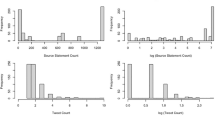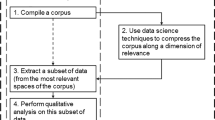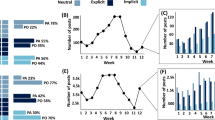Abstract
Detecting protest events using social media is an important task with many useful applications to emergency services, law enforcement agencies, and other stakeholders. A plethora of research on event detection using social media has presented myriad approaches relying on tweet contents (text) to solve the event detection problem, with notable improvements over time. Despite the myriad of existing research, the use of the structural relationships among users in online Twitter network communities for event detection is rarely observed. In this work, we present a novel protest event detection framework called SensorTree. SensorTree utilizes the network structural connections among users in a community for protest event detection. The SensorTree framework tracks information propagation in Twitter network communities to model the sudden change in growth of these communities as burst for event detection. Once burst is detected, SensorTree builds a tensorized topic model to extract events. To show the prowess of SensorTree for event detection, we conduct extensive experiments on geographically diverse Twitter datasets using qualitative and quantitative evaluations. We further show the superiority of SensorTree by comparing our results to several existing state-of-the-art methods. SensorTree outperforms the baselines as well as the comparison models. The results further suggest that utilizing network community structure yields concise and accurate event detection. We also present case studies on real-world protest event to further show that SensorTree is capable of detecting events with fine granularity description without any language restrictions.











Similar content being viewed by others
References
Abdelhaq, H., Sengstock, C., Gertz, M.: Eventweet: online localized event detection from twitter. PVLDB 6(12), 1326–1329 (2013)
Aggarwal, C.C., Subbian, K.: Event detection in social streams. In: Proceedings of the 2012 SDM, pp 624–635. SIAM (2012)
Anandkumar, A., Kakade, S.M., Foster, D.P., Liu, Y.K., Hsu, D.: Two svds suffice: spectral decompositions for probabilistic topic modeling and latent dirichlet allocation. Tech. rep. (2012)
Anandkumar, A., Ge, R., Hsu, D., Kakade, S.M., Telgarsky, M.: Tensor decompositions for learning latent variable models. J. Mach. Learn. Res. 15(1), 2773–2832 (2014)
Ansah, J., Kang, W., Liu, L., Liu, J., Li, J.: Information propagation trees for protest event prediction. In: PAKDD 2018, pp 777–789. Springer (2018)
Ansah, J., Kang, W., Liu, L., Liu, J., Li, J.: Sensortree: bursty propagation trees as sensors for protest event detection. In: International Conference on Web Information Systems Engineering, pp 281–296. Springer (2018)
Becker, H., Naaman, M., Gravano, L.: Learning similarity metrics for event identification in social media. In: 3rd ACM WSDM, pp 291–300. ACM (2010)
Becker, H., Naaman, M., Gravano, L.: Beyond trending topics: real-world event identification on twitter. ICWSM 11(2011), 438–441 (2011)
Blei, D.M., Ng, A.Y., Jordan, M.I.: Latent dirichlet allocation. J. Mach. Learn. Res. 3(Jan), 993–1022 (2003)
Cadena, J., Korkmaz, G., Kuhlman, C.J., Marathe, A., Ramakrishnan, N., Vullikanti, A.: Forecasting social unrest using activity cascades. Plos one 10(6), e0128879 (2015)
Chen, F., Neill, D.B.: Non-parametric scan statistics for event detection and forecasting in heterogeneous social media graphs. In: Proceedings of the 20th ACM SIGKDD, pp 1166–1175. ACM (2014)
He, D., Parker, D.S.: Topic dynamics: an alternative model of bursts in streams of topics. In: Proceedings of 16th ACM SIGKDD, pp 443–452. ACM (2010)
Huang, F., Niranjan, U., Hakeem, M.U., Anandkumar, A.: Online tensor methods for learning latent variable models. J. Mach. Learn. Res. 16(1), 2797–2835 (2015)
Ihler, A., Hutchins, J., Smyth, P.: Adaptive event detection with time-varying poisson processes. In: Proceedings of 12th ACM SIGKDD, pp 207–216 (2006)
Kleinberg, J.: Bursty and hierarchical structure in streams. Data Min. Knowl. Disc. 7(4), 373–397 (2003)
Kontostathis, A., Galitsky, L.M., Pottenger, W.M., Roy, S., Phelps, D.J.: A survey of emerging trend detection in textual data mining. In: Survey of Text Mining, pp 185–224. Springer (2004)
Li, J., Wen, J., Tai, Z., Zhang, R., Yu, W.: Bursty event detection from microblog: a distributed and incremental approach. Concurrency and Computation: Practice and Experience 28(11), 3115–3130 (2016)
Lin, C.Y., Hovy, E.H.: Automatic evaluation of summaries using n-gram co-occurrence statistics. In: HLT-NAACL (2003)
Marcus, A., Bernstein, M.S., Badar, O., Karger, D.R., Madden, S., Miller, R.C.: Twitinfo: aggregating and visualizing microblogs for event exploration. In: Proceedings of the SIGCHI Conference on Human Factors in Computing Systems, pp 227–236. ACM (2011)
Sakaki, T., Okazaki, M., Matsuo, Y.: Earthquake shakes twitter users: real-time event detection by social sensors. In: 19th WWW, pp 851–860. ACM (2010)
Weng, J., Lee, B.S.: Event detection in twitter. ICWSM 11, 401–408 (2011)
Xie, W., Zhu, F., Jiang, J., Lim, E.P., Wang, K.: Topicsketch: real-time bursty topic detection from twitter. IEEE TKDE 28(8), 2216–2229 (2016)
Zhang, C., Gutiérrez, E.D., Asplund, A.C., Pescatore, L.: Tensor decomposition for topic models : an overview and implementation (2012)
Acknowledgements
We acknowledge Data to Decisions CRC (D2DCRC), Cooperative Research Centres Programme, and the University of South Australia for funding this research. The work has also been partially supported by ARC Discovery Project DP170101306.
Author information
Authors and Affiliations
Corresponding author
Additional information
Publisher’s note
Springer Nature remains neutral with regard to jurisdictional claims in published maps and institutional affiliations.
This article belongs to the Topical Collection: Special Issue on Web Information Systems Engineering 2018
Guest Editors: Hakim Hacid, Wojciech Cellary, Hua Wang and Yanchun Zhang
Rights and permissions
About this article
Cite this article
Ansah, J., Liu, L., Kang, W. et al. Leveraging burst in twitter network communities for event detection. World Wide Web 23, 2851–2876 (2020). https://doi.org/10.1007/s11280-020-00786-y
Received:
Revised:
Accepted:
Published:
Issue Date:
DOI: https://doi.org/10.1007/s11280-020-00786-y




